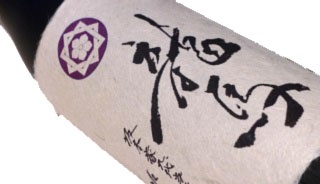The label of “GOKUIN RYOMA” is made of Kurorani Washi. Each sheet of the paper is made by hand.
Records have it that surviving warriors of the Heike family took a shelter deep in Kurotani village in the mountain valley and started making the paper 800 years ago to make a living. The village prospered thereafter with almost all residents engaged in the making of the paper. Few records remain, however, because most of them were lost in fires. But the village keeps a document written on Kuraotani Washi, which was made in 1593 and has survived to date.
The villagers mainly made paper for everyday use, such as sliding screen paper and lantern paper. They extended their scope of work gradually in step with various incentives. During the Edo period, they produced many sheets of paper for Kyoto apparel since the village is situated relatively close to Kyoto. During and after the Meiji period, they started producing paper for cocoon bags in parallel to the development of the sericultural industry. This way, their business expanded into the production of paper for everyday life and industries. More recently, they started producing postcards, letter paper, art paper, and craft paper. The production of everyday paper and paper-related commodities pushed the village to the state of one of the main paper production centers in Japan.
Kurotani village adhered to the classic method of producing a paper by hand while the nation’s paper manufacturing industry was switching from the hand-made method to the machine.
Over the passage of time, the use of Kurotani Washi has changed. But its traditional production method has remained unchanged to date. Kurotani village is known to the world as the precious hand-made paper production center where the expertise has been passed down to craftsmen over the past generations.

 Japanese
Japanese


